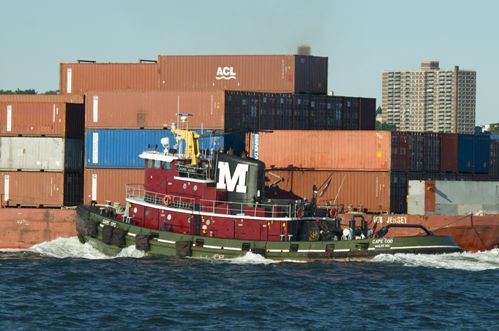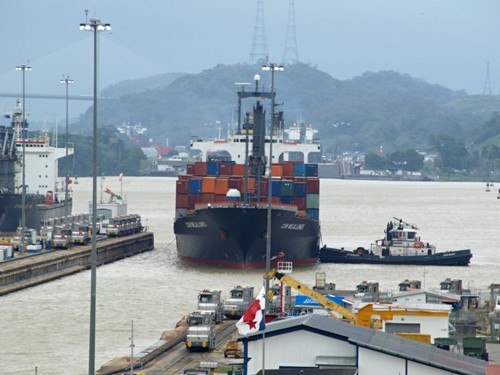What Happens to the Vessel, Cargo, and Wages of the Crew in Port of Refuge?
Port of Refuge is a situation where in a vessel is diverted to a nearby port because of an emergency situation where she cannot sail any further.
The decision to call for a port of refuge is taken by the master of the vessel when he finds that continuing the voyage can be dangerous to the ships’ cargo and crew.
However, it is often discussed as to what would happen to the vessel, cargo, and the crew till the time the ship goes through the procedure of port of refuge.
In this article we will discuss using examples as to how a general port of refuge is carried out and maintained. If you have not read our article – The Importance of General Average in the Maritime Industry, please read it to understand this article in a better way.
Let us assume a Bulk Carrier ‘A’ loads grain cargo from Port Jurong, Malaysia for Port Sulawesi, Indonesia. A convenient port between those two ports is Subic Bay, Philippines.
Case 1: Due to a collision while en route sea, the vessel loses her propulsion. Consequently only action that can be taken is that she has to be towed to the nearest port of refuge which is Singapore. After repairs, which are necessary to continue the voyage further, while she leaves Singapore if we calculate the general average it will comprise of the expenses which were incurred i.e. to enter and leave Singapore. In this case during the period when the vessel is detained in Singapore the wages and maintenance expenses are to be borne as a part of general average.
Case 2: If in Singapore repairs couldn’t be carried out to enable propulsion and the vessel had to be further towed back to the loading port i.e. Port Jurong, where the repairs were carried out and the vessel then left Port Jurong to continue the voyage further, then Port Jurong shall be considered as Port of Refuge and hence general average shall include the cost of removal from Singapore, towage to Jurong and the cost of entering and leaving Port Jurong.
As the voyage gets prolonged in BOTH THE CASES mentioned above, due to the vessel entering Port of Jurong ,the wages and maintenance of crew and master for this prolonged period is to be included in general average.
Case 3: If at Port Jurong under Case 2, to continue further voyage safely it was imminent that some cargo be discharged from hold no. 7 and some cargo to be res towed between holds No. 1 and 5. In such cases, the cost of discharge and re stowage must be allocated in general average.
In all above 3 cases the cost of fuel and stores used in effecting repairs are excluded from general average. Only fuel and stores consumed during the detention are included in general average.
Case 4: If the ship is rendered unfit for voyage or it abandons the voyage before discharge then the cargo is offloaded and stored ashore. The storage expenses will be added to the general average and shall be counted till the date of ship’s condemnation or abandonment of voyage, if abandonment is before completion of discharge then it’s counted till completion of discharge. Similar to the general average for cargo, wages and maintenance of crew too remain payable under general average for the period of abandonment.
Any loss of cargo during stowage, transfer or discharge in all above cases shall be added to general average.
Generally completion of average adjustment is a long process. Thus, the carriers in order to exercise their lien, obtains from the consignee or owner of the cargo, a signed bond known as an Average Bond. The bond states that when value of loss is calculated he’ll pay his share. The ship owner collects deposits in name of the ship owner and of cargo representatives and puts them into a joint account known as General Average Account.
The circumspect and comprehensive guidelines of the General Average rules enable an Average Adjuster to solve the claims arising; which due to nature of present day trade are boundless and inconceivable.
REFERENCES: YORK ANTWERP RULES 1994
Image Credits
seeunseen, towmasters
Do you have info to share with us ? Suggest a correction

About Author
Abhishek Bhanawat is a chief officer who has worked on various types of tankers. He specializes in Crude Oil and Product Tankers. He is highly passionate about his work and loves to sail.
Latest Maritime law Articles You Would Like:
Latest News
- What is the Purpose of DG Shipping?
- What are Logistics Risks?
- How Port and Terminal Operators Can Control Emissions?
- Minimum Quantity Commitment (MQC) and Liquidated Damages in Container Shipping: Concept and Relevance
- MARPOL (The International Convention for Prevention of Marine Pollution For Ships): The Ultimate Guide
- The Ultimate Shipping Container Dimensions Guide
Subscribe To Our Newsletters
By subscribing, you agree to our Privacy Policy and may receive occasional deal communications; you can unsubscribe anytime.


















hi i am renga , i am a marine student studying 3rd year, i like your page and call 9655040640 ,